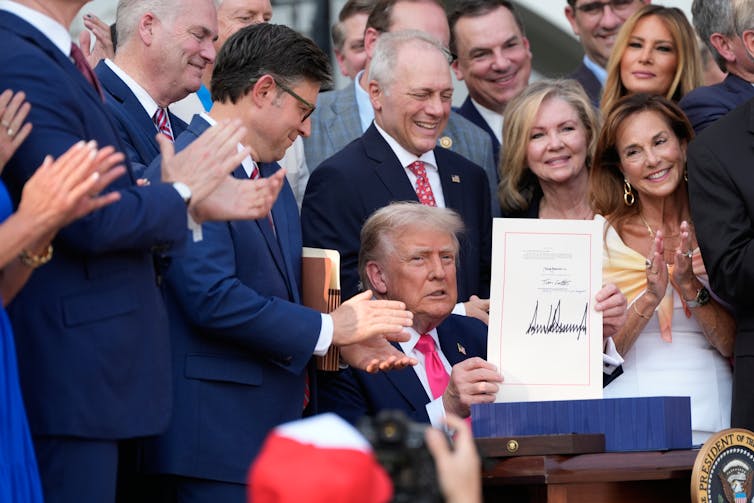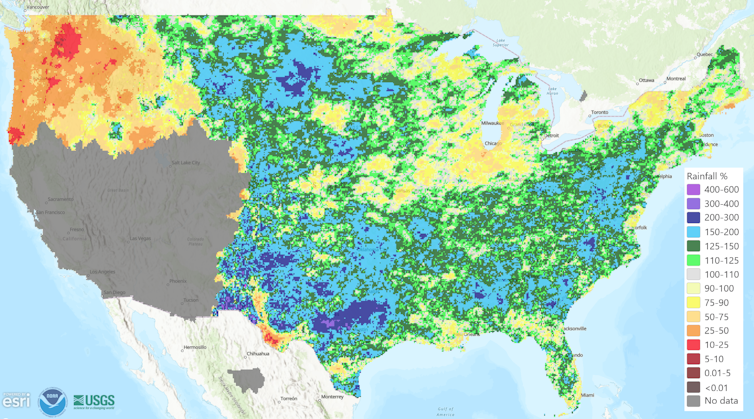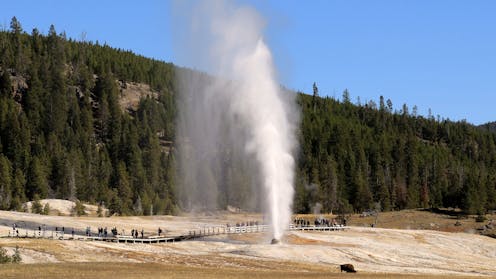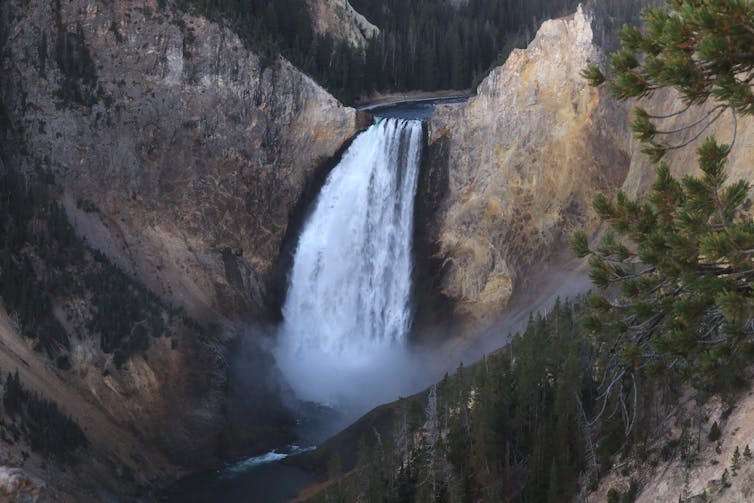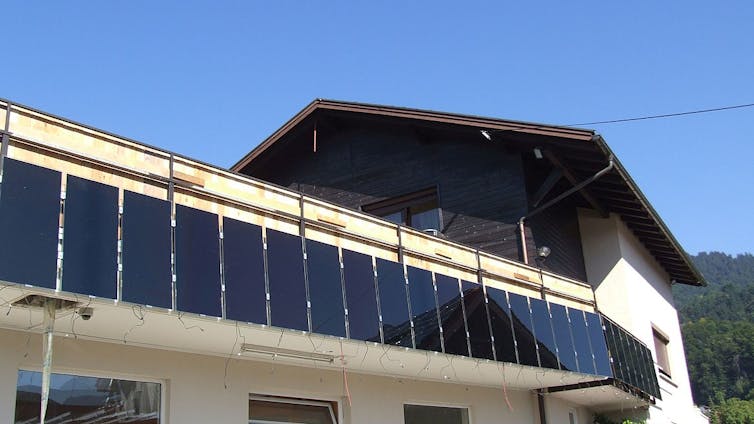Source: The Conversation – Canada – By Neeraja Chinchalkar, PhD student, Earth and Planetary Science and Exploration, Western University
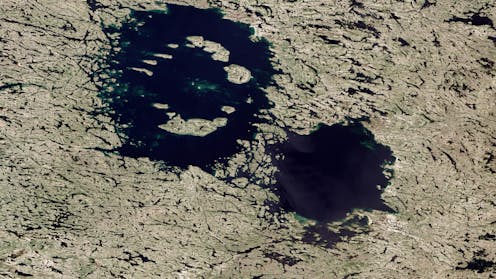
When high-velocity asteroids land on the Earth, they can form a meteor impact crater. Such collisions have occurred throughout Earth’s history and still occur on other planetary bodies today.
While most asteroid impacts on Earth happened millions of years ago, their remnants are still preserved across the Earth’s surface. Impact-affected rocks experience intense heat and pressure during the impact.
One such ancient impact site, known as West Clearwater Lake, is located in Québec, on the Canadian Shield near Hudson Bay. This crater, now filled with water, was formed when an asteroid struck Earth approximately 285 million years ago.
A natural thermometer
Zircon is a mineral commonly found in a variety of rock types on Earth and in some rocks on the moon and other planets. It is an incredibly durable, naturally occurring mineral that has been around since as long as the Earth itself. The physical resilience of zircon makes it a useful tool to study natural geological phenomena.
Zircon, when heated enough, begins to break down into its components: zirconia (ZrO₂) and silica (SiO₂). Zirconia has different forms depending on how hot it gets, called polymorphs — these are minerals with the same chemical make up but different crystal structures that adapt to changing physical conditions. One of the polymorphs of zirconia is cubic zirconia, named for its cubic structure.
Finding cubic zirconia in nature is incredibly rare because of the specific conditions it requires to remain structurally stable. Cubic zirconia forms only under extreme conditions where temperatures reach above 2,370 C. On the Earth’s surface, such naturally hot temperatures have only been known to exist during impact crater formation.
At West Clearwater Lake, we found evidence of this natural cubic zirconia preserved in natural glass — a remnant of the intense heat from the ancient asteroid impact. For comparison, active volcanoes such as those in Hawaii reach temperatures in the range of 800 to 1,200 C.
In nature, zirconia exists in several forms, depending on the temperature and pressure it’s exposed to. The three main polymorphs are: monoclinic, tetragonal and cubic.
Monoclinic zirconia is stable at lower temperatures and is the most common form of zirconia found in nature. Tetragonal zirconia exists at moderately high temperatures and is unstable at low temperatures. Cubic zirconia is only stable at extremely high temperatures above 2,370 C, and is also unstable at lower temperatures.
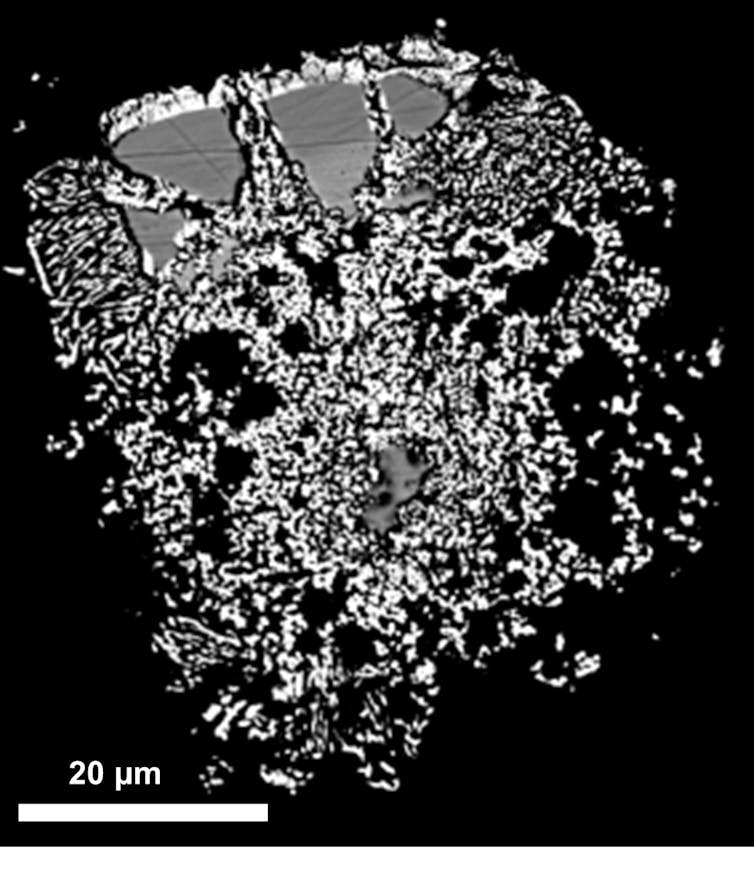
(N. Chinchalkar , G. Osinski, T. Erickson & C. Cayron), CC BY
A hot piece of history
How, exactly, did cubic zirconia end up in these rocks?
When the asteroid hit the West Clearwater Lake region millions of years ago, it generated temperatures hot enough to melt and vaporize some of the surface rock. As the molten rock cooled and solidified, microscopic crystals of zircon, originally present within target material, got caught up in the hot melt and began to transform.
At temperatures above 2,370 C, these zircon crystals started to break down, and some of them turned into cubic zirconia. This provided evidence of the extreme heat, which our research team discovered in our recent study.
This fascinating evidence gives us insights into how hot it can get during a meteorite impact, something that’s hard to measure millions of years after the fact.
Artificial production
Synthetic cubic zirconia is produced artificially by heating zirconium oxide to high temperatures, then cooling it in a controlled environment; the zirconia then forms crystals that resemble diamonds. Synthetic cubic zirconia is a popular substitute for diamonds in jewelry because it is cheap to produce but still sparkles like diamonds.
Synthetic cubic zirconia contains high amounts of stabilizing agents, like the element yttrium, that prevent it from becoming unstable and help it maintain its brilliance over time.
Without the additives used in synthetic cubic zirconia, natural zirconia is much more likely to transform into other forms as it cools down. That’s why finding natural cubic zirconia is so rare — it exists only in places where temperatures were once unimaginably high.
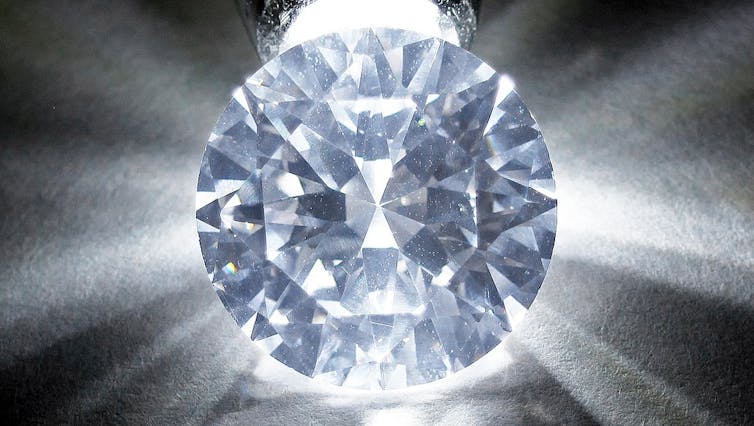
(James St. John/Flickr), CC BY
Asteroid impacts
Apart from being a fascinating geological discovery, finding evidence of cubic zirconia in an impact structure gives scientists a better understanding of the conditions created during asteroid impacts. These ancient events weren’t just violent — they fundamentally changed the Earth’s surface in ways that we’re still learning about.
While the discovery of cubic zirconia in West Clearwater Lake is exciting, it’s just one piece of the puzzle. Impact craters are not unique to Earth — they are found on most rocky objects in our solar system. For example, cubic zirconia has been found in moon rocks brought back by astronauts of the Apollo missions.
Meteorite craters like the West Clearwater Lake are only a small part of a larger story of Earth’s history. During its nascent years, Earth was regularly bombarded by asteroids that were remnants of the debris from the formation of the solar system, and these collisions helped shape the planet’s surface. In fact, there is compelling evidence that asteroid impacts may have played a role in the origin of life by creating environments where complex chemicals could form.
![]()
Neeraja Chinchalkar is affiliated with the Lunar and Planetary Institute
Gordon Osinski receives funding from the Natural Sciences and Engineering Research Council of Canada and the Canadian Space Agency.
Timmons Erickson does not work for, consult, own shares in or receive funding from any company or organisation that would benefit from this article, and has disclosed no relevant affiliations beyond their academic appointment.
– ref. Cubic zirconia only forms under extreme temperatures, like those produced when an asteroid impacts Earth – https://theconversation.com/cubic-zirconia-only-forms-under-extreme-temperatures-like-those-produced-when-an-asteroid-impacts-earth-238267


